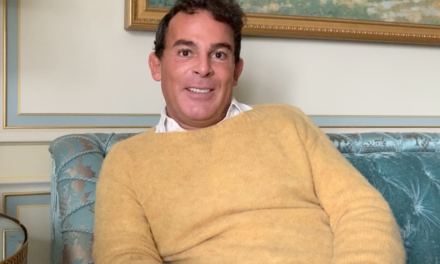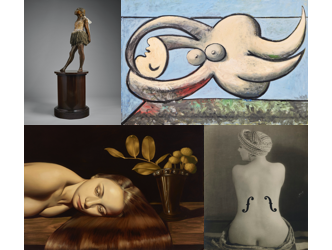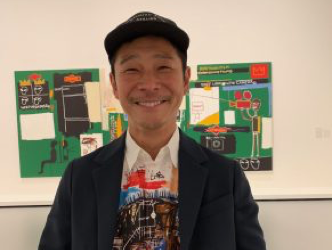The legacy of the artist
It is utterly fascinating to learn why an artist starts to paint such or such a thing that goes on to secure their artistic legacy. This is the subject on display until 10 January at the Musée de l’Orangerie in an exhibition that draws a direct and wholly unexpected link between Chaïm Soutine (1893-1943), the tortured genius painter from the School of Paris, and another genius, the Dutch-American Willem de Kooning (1904-1997), across 43 artworks.

Chaim Soutine
Gestural painting
Soutine, who was great friends with Modigliani, is known for his gestural and thickly textured style of painting. He gives his trees, figures, roads and buildings sinuous forms, moving lines that make the viewer feel like they are in a permanently inebriated state.

Chaim Soutine
Hypnotic expressionism
This hypnotic expressionism proved moderately successful in France but also, almost in parallel, highly successful in America.
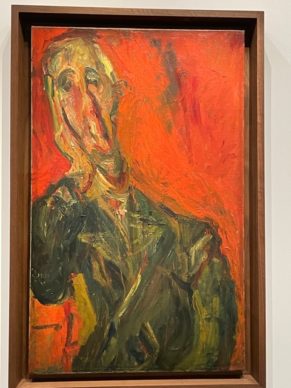
Chaim Soutine
Doctor Barnes
Because the famous Dr Barnes, who would give his name to his foundation in Philadelphia, bought Soutine’s canvases extensively (no less than 59 paintings acquired at the time, of which he would only keep 16), with a view to – among others things – make a decent profit as revealed in the catalogue by Sylvie Patrie, former deputy director of the Barnes Foundation.

Chaim Soutine
Speculation
The principle of speculation in contemporary art is not a 21st-century invention. Thus Albert Barnes wrote in 1923: “In my opinion, there can be no doubt that he will be classed above all other painters since Van Gogh, and I think we can make a fortune by selling his paintings for several times the price I paid.” This is how Soutine became a major painter across the Atlantic.
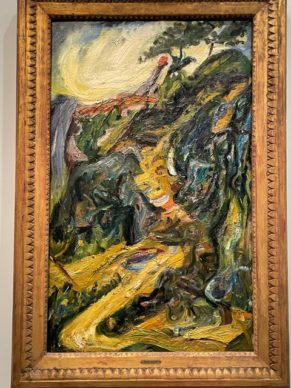
Chaim Soutine
Claire Bernardi
Claire Bernardi, co-curator of the exhibition, explains: “This visibility accorded to Soutine’s work in the years prior to the United States entering the war goes together with his inscription within a well-defined artistic horizon, that of expressionism.”
Flirting with abstraction
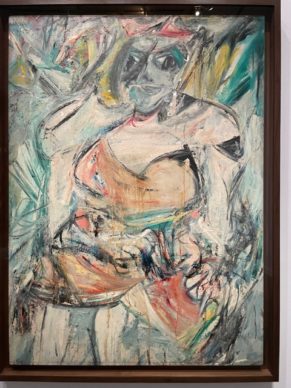
Willem de Kooning
In Soutine’s work, De Kooning – like many American art theorists – appreciates a strong sense of gesture that flirts with abstraction. The visit of the Soutine retrospective to Moma which opened in October 1950 followed by the Barnes Foundation in 1952 consolidated his fascination, and even more: the impact it made.
Crazy about Soutine
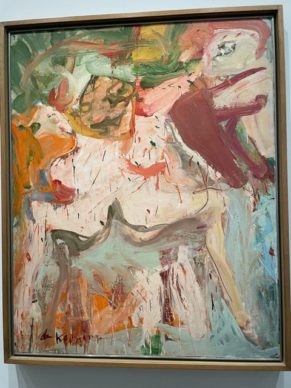
Willem de Kooning
He would say towards the end of his life: “I’ve always been crazy about Soutine – all of his paintings. Maybe it’s the lushness of the paint.” “His style of painting resonated in an unprecedented way within the new context of American art, leading to the discovery at the heart of his expressionism of a new unpremeditated form of abstraction,” explains Claire Bernardi.
From the Moma retrospective
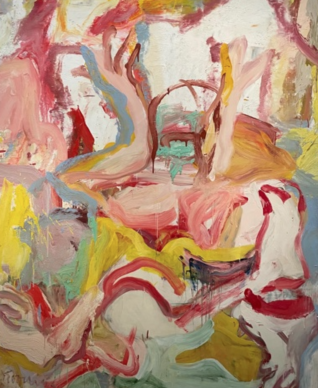
Willem de Kooning
The musée de l’Orangerie has assembled 15 very expressive paintings from the Moma retrospective in 1950. The distortions of the landscape make the vegetation and houses tangle together, like in his famous Céret landscapes from the 1920s.
Woman series

Willem de Kooning
It would seem that Willem de Kooning adapted this idea to his female figures in his famous “Woman” series from the 1950s, considered to be the peak of his creation. In these he created, following his elder, an interpenetration of subject and background.
Marylin Monroe
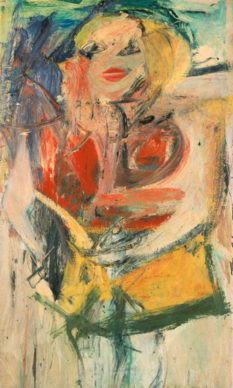
Willem de Kooning
In 1954-55 he even called one of his paintings “Woman as Landscape”. Progressively the representations became diluted, to the extent that his creatures, who could be quite monstrous, including a portrait of Marilyn Monroe, ended up blending together in the 1970s with the tumultuous lines of vegetation. This was the case in 1971 for “Woman in the Garden”. With his dancing and gestural forms,
Faithful to Soutine
De Kooning remains, at least through his titles, occupying an in-between state, between abstraction and figuration. Faithful to Soutine.
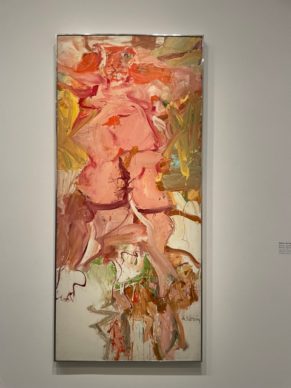
Willem de Kooning
Chaïm Soutine, Willem de Kooning, la peinture incarnée. Until 10 January. www.musee-orangerie.fr/fr
Donating=Supporting

Support independent news on art.
Your contribution : Make a monthly commitment to support JB Reports or a one off contribution as and when you feel like it. Choose the option that suits you best.
Need to cancel a recurring donation? Please go here.
The donation is considered to be a subscription for a fee set by the donor and for a duration also set by the donor.

